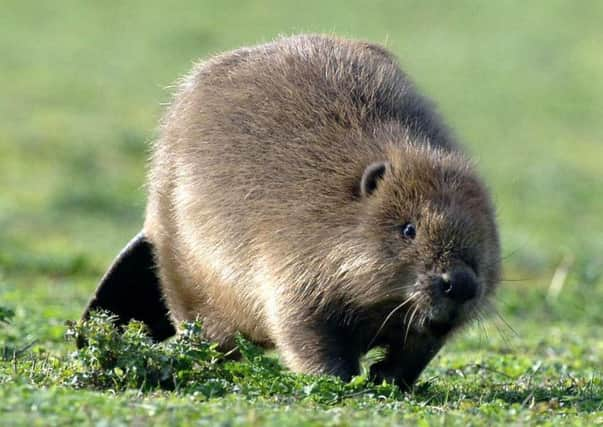Immigrant beavers adapting well to life in Tayside


More than 150 European beavers, which have lived in Tayside for at least nine years, are “well adapted” to modern Scotland and free of harmful diseases, Scottish Natural Heritage (SNH) revealed yesterday.
However, it said a new study also showed beavers building dams and burrowing into flood banks could drench farmland, a situation which would have to be tackled if the beavers were to be allowed to stay.
Advertisement
Hide AdAdvertisement
Hide AdThe success of the mammals, which were hunted to extinction in Scotland 400 years ago, could signal their official reintroduction. This is because SNH said ministers will have to decide either to keep them or remove them.
The Tayside beavers could force the Scottish Government’s hand because appeasing farmers with damage mitigation work is likely to be more politically acceptable than a likely public outcry if they were to be eradicated once more.
The Tayside animals, originally from Germany, are believed to have escaped or been released from private collections.
They are found in rivers ranging from Kinloch Rannoch, Kenmore and Crieff to Bridge of Earn, Perth and Forfar. The thriving colonies have also overshadowed an official beaver trial, at Knapdale, west of Lochgilphead in Argyll, which was launched with 16 arrivals from Norway in 2009.
That got off to a faltering start, with only half surviving, but numbers have since remained stable despite a high number of young beavers dying. However, experts said the project was not intended to be self-sustaining.
Ministers gave the Tayside beavers a stay of execution three years ago pending the Knapdale trial but will have to decide their fate after SNH submits a final report next month. SNH said the biggest concern among farmers had been on the lower River Isla flood plain where it meets the River Tay, south of Blairgowrie.
It said: “Any beaver dams left in place here could cause the extensive network of drainage ditches to fail, causing flooding and interfering with cultivation of productive land.
“Beaver burrows in earth flood banks also increased the risk of a breach and flooding of the farm land behind.
Advertisement
Hide AdAdvertisement
Hide Ad“A number of methods to protect trees from being gnawed and felled and to reduce water levels behind dams were trialled successfully.
“The impacts of burrowing in flood banks and regular damming of drainage networks were more challenging to manage.”
SNH Tayside and Grampian area manager David Bale, who chaired the Tayside Beaver Study Group, said: “Our work documenting the impacts of beavers on land management interests has shown that in many situations, beavers are likely to cause few concerns.
“But if they were to be permanently reintroduced, efficient, effective and affordable ways of managing and reducing potentially significant impacts on intensively farmed land and other interests would have to be found.”
Farmers’ leaders said beavers should not be given protected status. NFU Scotland spokesman Andrew Bauer said: “We believe that already-stretched SNH species management budgets cannot cope with the high costs of managing what many call ‘nature’s engineer’.
“Beaver reintroduction would divert resources and attention away from helping indigenous species, such as the wildcat and capercaille that are under threat.”